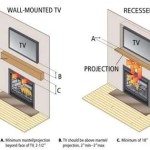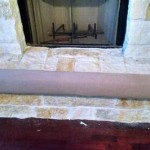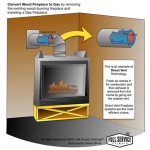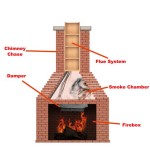Eco-Friendly Fireplaces: A Sustainable Approach to Home Heating
As environmental awareness increases, homeowners are increasingly seeking sustainable alternatives for their heating needs. The traditional fireplace, often associated with inefficient wood burning and harmful emissions, is undergoing a transformation. Eco-friendly fireplaces offer a cleaner, more sustainable way to enjoy the ambiance and warmth of a fire without significantly contributing to environmental degradation. These alternatives prioritize efficiency, reduced emissions, and the use of renewable or sustainable fuel sources.
Understanding the Environmental Impact of Traditional Fireplaces
Traditional wood-burning fireplaces pose several environmental concerns. The combustion of wood releases particulate matter, carbon monoxide, and other harmful pollutants into the atmosphere. These emissions contribute to air pollution, impacting both indoor and outdoor air quality. Particulate matter, specifically PM2.5, can penetrate deep into the lungs and cause respiratory problems, cardiovascular issues, and other health complications. Furthermore, the burning of wood releases greenhouse gases, contributing to climate change. Deforestation, often associated with sourcing firewood, further exacerbates environmental damage by reducing carbon sinks and disrupting ecosystems.
Eco-Friendly Fireplace Options: A Detailed Overview
Several types of fireplaces offer a more environmentally conscious approach to heating. These options range from utilizing renewable fuel sources to improving combustion efficiency and reducing emissions.
Electric Fireplaces: Electric fireplaces operate by converting electricity into heat. They are highly efficient, with nearly 100% of the energy being converted to heat. They produce no emissions, require no venting, and offer a relatively low carbon footprint, especially when powered by renewable energy sources. Electric fireplaces are available in a variety of styles and sizes, including wall-mounted, freestanding, and insert models, providing flexibility in design and placement. The visual appearance of flames is often achieved through LED technology, mimicking the look of a real fire without the associated environmental drawbacks.
Ethanol Fireplaces: Ethanol fireplaces burn bioethanol, a renewable fuel produced from plant-based materials such as corn or sugarcane. Ethanol fireplaces are ventless and produce no smoke, ash, or soot. The combustion of ethanol releases carbon dioxide and water vapor, though in significantly smaller quantities compared to wood burning. The carbon dioxide released is considered carbon neutral, as it is absorbed by plants during their growth cycle. However, it's important to source ethanol from sustainable and responsible producers to ensure the long-term environmental benefits. Ethanol fireplaces offer a modern and stylish aesthetic and are suitable for both indoor and outdoor use.
Gas Fireplaces: Gas fireplaces, whether fueled by natural gas or propane, are generally more efficient and produce fewer emissions than traditional wood-burning fireplaces. Modern gas fireplaces often incorporate advanced combustion technologies, such as sealed combustion chambers and catalytic converters, to further reduce emissions. Direct-vent gas fireplaces draw combustion air from outside and vent exhaust gases directly outside, preventing indoor air pollution. While gas is a fossil fuel, gas fireplaces offer a controllable and efficient heating solution with a lower environmental impact compared to wood. Choosing a model with high Annual Fuel Utilization Efficiency (AFUE) rating is crucial to maximize efficiency and minimize fuel consumption.
Pellet Stoves: Pellet stoves burn compressed wood pellets, which are made from recycled wood waste such as sawdust and wood shavings. These pellets are a renewable and sustainable fuel source. Pellet stoves are highly efficient and can provide significant heat output. They also produce relatively low emissions compared to traditional wood stoves. Pellet stoves require electricity to operate the auger that feeds pellets into the combustion chamber and the blower that circulates heat. However, the electricity consumption is typically minimal. Regular cleaning and maintenance are essential to ensure optimal performance and minimize emissions.
Key Considerations for Choosing an Eco-Friendly Fireplace
Selecting the right eco-friendly fireplace involves careful consideration of several factors, including fuel source, energy efficiency, emissions, maintenance requirements, and overall environmental impact.
Fuel Source Sustainability: The sustainability of the fuel source is a critical factor. For electric fireplaces, consider sourcing electricity from renewable energy providers. For ethanol fireplaces, prioritize ethanol produced from sustainably grown plants. For gas fireplaces, explore the possibility of using renewable natural gas (RNG), which is produced from organic waste. For pellet stoves, ensure that the wood pellets are sourced from sustainably managed forests and certified by organizations such as the Forest Stewardship Council (FSC).
Energy Efficiency and Emissions Ratings: Look for fireplaces with high energy efficiency ratings, such as AFUE for gas fireplaces or BTU output per pound of fuel for pellet stoves. Lower emissions are also essential. Check for certifications such as the Environmental Protection Agency (EPA) certifications for wood and pellet stoves, which indicate compliance with emission standards. Selecting a fireplace with a high efficiency rating and low emissions will minimize fuel consumption and reduce the environmental footprint.
Maintenance and Long-Term Environmental Impact: Regular maintenance is crucial for ensuring the efficient and clean operation of any fireplace. Proper cleaning, inspection, and repairs can prevent malfunctions and reduce emissions. Consider the long-term environmental impact of the fireplace, including the production, transportation, and disposal of fuel. Opt for materials and components that are durable and recyclable to minimize waste. Researching the entire lifecycle of the fireplace can help make an informed and environmentally responsible decision.

What Is The Most Eco Friendly Fireplace Direct Fireplaces

Eco Friendly Fireplaces
:max_bytes(150000):strip_icc()/__opt__aboutcom__coeus__resources__content_migration__treehugger__images__2014__11__ethanol-fireplace-c7220c1d627c4c1d891650f011dd628e.jpg?strip=all)
Which Fireplace Is Best For The Environment Wood Gas Electric Pellet Or

Are Eco Friendly Fireplaces True To Their Name

Eco Friendly Fireplaces What Are The Most Environmentally

Eco Friendly Fireplaces What Are The Most Environmentally
:max_bytes(150000):strip_icc()/__opt__aboutcom__coeus__resources__content_migration__mnn__images__2013__01__main_fireplace-9336e3dc03be49a0882a9045ecba4430.jpg?strip=all)
How To Choose An Eco Friendly Fireplace

An Alternative Eco Friendly Fireplace Bioethanol Fires The Interior Editor

An Alternative Eco Friendly Fireplace Bioethanol Fires The Interior Editor

Are Eco Friendly Fireplaces True To Their Name
Related Posts








